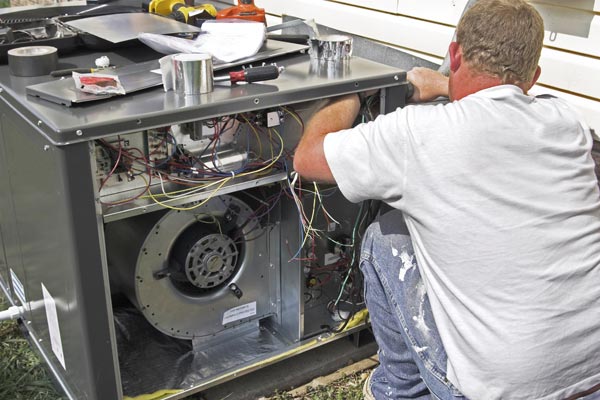The Do’s and Don’ts of Residential AC Repair
The American dream for many folks includes home ownership. Some folks are perfectly content to call in professionals to handle needed repair and maintenance, while others, with an independent streak, are determined to do things themselves. This number of DIY-minded homeowners is rather large.
Multiple box store chains provide homeowners with everything from bags of asphalt cold patches to zinc-covered roofing nails. Television shows and YouTube channels give constant instruction concerning repairs, remodels, and renovation. Some eager pioneers are willing to try just about anything to improve their homes and save some cash in the process.
If you enjoy taking projects on around the house, take a closer look at your HVAC system. There are some very tasks that make great DIY projects. There are also tasks that should only be attempted by professionals. Look at this list and you will understand why.
Prime DIY Tasks
The best DIY tasks are uncomplicated and make a significant difference. Here are four such tasks that will help maintain your HVAC system, protect your home, and keep your family comfortable and healthy.
Change Your Air Filter
Yes, it is such an easy task. It is also the single best thing you can do to keep your AC running and the air in your home clean. Look at these details.
- The air filter needs to be changed at least every three months—more often in a home with excessive dust. A clean filter keeps the indoor air clean for your family.
- A clogged air filter reduces the airflow across the evaporator coil. The evaporator coil cools the air and removes humidity, but only when adequate air is present. A dirty filter slows these functions down.
- Your AC system does not give up when the filter is dirty, it just works harder. However, this puts stress on the system and causes parts to wear out more quickly.
Changing the filter is a simple task with great rewards.
Clean the Evaporator Chamber
Cooling and dehumidifying happen in the evaporator chamber in the indoor cabinet of your central air unit. It removes gallons of water from the air every day and the water must drain away. Dark, moist areas are also prone to mold and algae growth and algae can clog the drain line. Here is a simple way to clean the chamber and remove algae from the line.
- Flip the circuit breaker for the HVAC system.
- Release the bolts/screws and open the chamber.
- You will observe the evaporator coil, perhaps V-shaped with little fins, and the drain pan under the coil.
- Use dry towels to completely dry the drain pan; a wet/dry shop vac will also work.
- Make sure to remove any debris from the drain pan.
- Prepare a 50/50 mixture of vinegar and water in a spray bottle. Liberally spray the coil and the drain pan with the mixture.
- Make sure the drain line flows freely. Empty the remainder of the mixture into the drain pan. The vinegar inhibits algae growth that can clog the drain line.
- Return the chamber cover and fasten it securely.
- Flip the circuit breaker to the on position.
Clean the Condenser Coil
The condenser coil is found outdoors, in a cabinet made of coils and fins. This coil also requires tremendous airflow between the fins to cool the gas inside. Dust and airborne particles collect between these coils and need to be cleaned away.
- Flip the HVAC breaker to the off position.
- With a garden hose, spray the coils with a consistent flow of water. Be thorough and clean the entire cabinet. Do not use a power washer, since the power of the stream can damage the thin coil fins.
- Make sure that shrubs and lawn furniture remain at least 2’ from the condenser unit. Trim the grass around the cabinet.
- When the cabinet is completely clean flip the breaker to the on position.
Dangerous Tasks for Professionals Only
An HVAC system is complex, with components that require training and experience to maintain. Some tasks should not be attempted by untrained homeowners.
Electrical Work
The wiring for HVAC systems has a variety of currents, from the very low current for control functions to high voltage for the heating element. Not recognizing the difference between the current load can be deadly. Uncovered leads and frayed wires pose a danger to a homeowner trying to repair electrical problems. The system also employs various sensors and control units, scattered throughout the system. Unskilled hands can damage these sensitive parts.
Recharging the Refrigerant Gas
Residential HVAC systems use various refrigerant gases; a common AC problem occurs when this gas leaks from the closed system. These gases are highly toxic and dangerous; they cause irritation to the eyes, skin, and nasal passages. Prolonged inhalation can cause dizziness, nausea, and breathing difficulties. Refrigerant gases should not be allowed to leak into the atmosphere, so only licensed professionals can purchase and handle them. Handling these gases must be left to a professional.
Furnace Repairs
Natural gas and propane are fossil fuels commonly used in residential HVAC systems for heating. A combustion chamber houses the flame, surrounded by the heat exchanger. Combustion produces carbon dioxide, carbon monoxide, and water vapor; the water vapor leads to corrosion, such as rust. Inspection and repair of these sites must be conducted by trained professionals. Missing cracks or openings in the combustion parts during inspection can lead to dangerous gases leaking into your home. For the safety of your family, leave these inspections and repairs to professionals.
Let us help You with Your Residential AC Repair
Let us help with your next Residential AC Repair. Call Doctor Cool & Professor Heat today at 281-338-8751 or email Doctor Cool and let our professional Residential AC Repair technicians assist with all of your Air Conditioning Issues.

